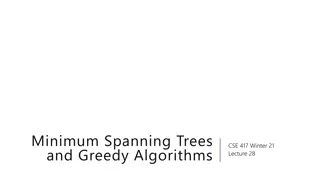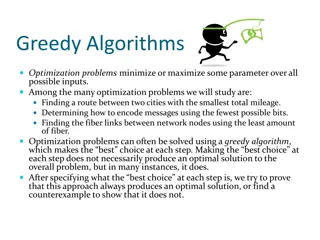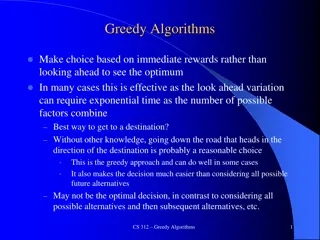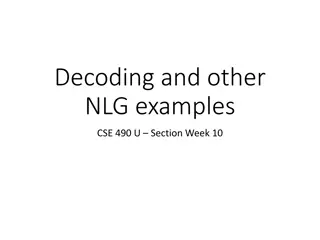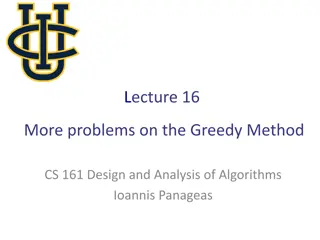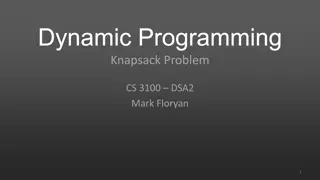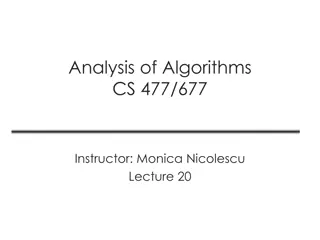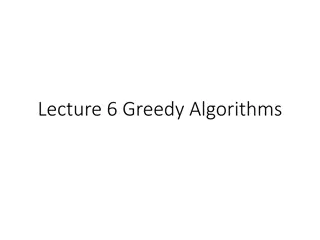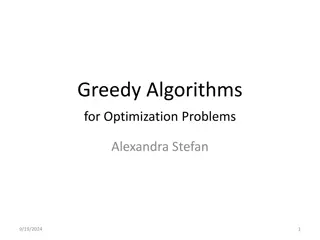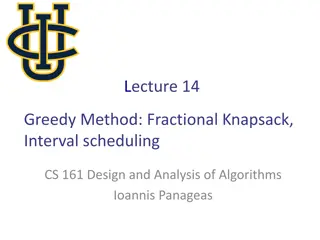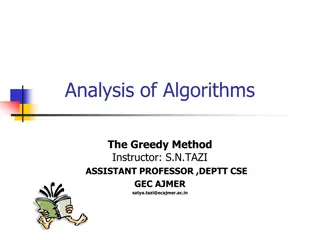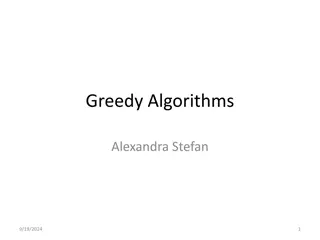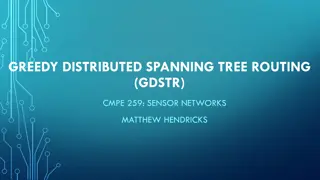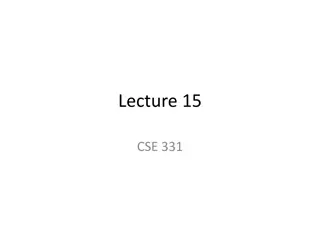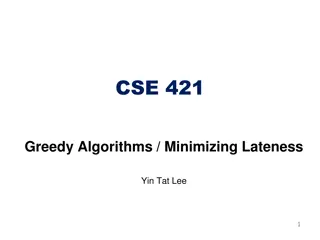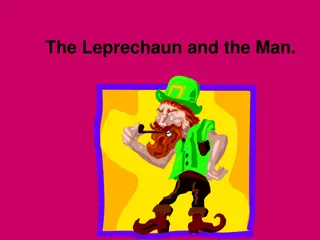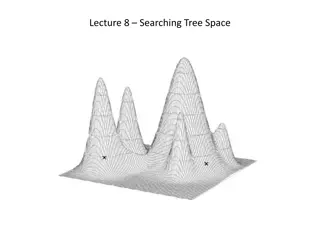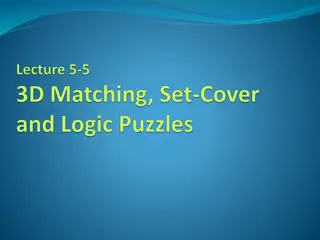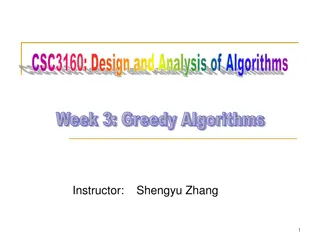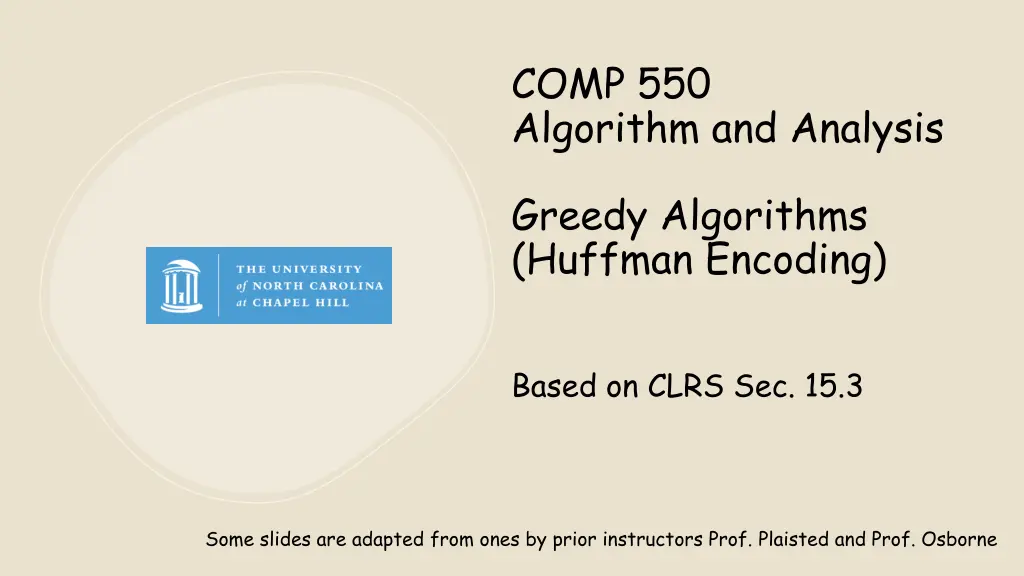
Understanding Data Compression and Encoding Techniques
Explore the concepts of data compression and encoding, including fixed-length and variable-length encoding methods like Huffman encoding. Learn how these techniques reduce the size of files by representing data more efficiently, leading to effective data storage and transmission. Discover the role of compression in lossy and lossless formats, and delve into the principles behind targeted data deletion for efficient information storage.
Download Presentation

Please find below an Image/Link to download the presentation.
The content on the website is provided AS IS for your information and personal use only. It may not be sold, licensed, or shared on other websites without obtaining consent from the author. If you encounter any issues during the download, it is possible that the publisher has removed the file from their server.
You are allowed to download the files provided on this website for personal or commercial use, subject to the condition that they are used lawfully. All files are the property of their respective owners.
The content on the website is provided AS IS for your information and personal use only. It may not be sold, licensed, or shared on other websites without obtaining consent from the author.
E N D
Presentation Transcript
COMP 550 Algorithm and Analysis Greedy Algorithms (Huffman Encoding) Based on CLRS Sec. 15.3 Some slides are adapted from ones by prior instructors Prof. Plaisted and Prof. Osborne
Data Compression Lossy Lossless Big file Small file Imperfect copy Big file Small file Perfect copy Restored Restored Original Original Compressed Compressed Example: JPEG, MP3 Example: ZIP, PNG, JBIG. Idea: Targeted data deletion. How to do this? Delete parts of data that people won t notice. COMP550@UNC 2
Fixed-Length Encoding Let s consider compression of text files How is text commonly represented? Fixed length encoding (e.g., ASCII, Unicode) 8 bits in ASCII Assuming ASCII, how many bits represent this text (ignore whitespace)? she sells seashells by the seashore Number of characters: 30 Bits required: 30 8 = 240 COMP550@UNC 3
Fixed-Length Encoding Assuming ASCII, how many bits represent this text (ignore whitespace)? she sells seashells by the seashore Number of characters: 30 Bits required: 30 8 = 240 There are 10 different characters in this text At least 4 bits per character are required under fixed-length encoding scheme Bits required: 30 4 = 120 COMP550@UNC 4
Variable-Length Encoding Drawbacks of fixed-length codes English letter frequencies (Wikipedia) Letter E T A O I N all others % 13 9.1 8.2 7.5 7 6.7 Wasted space Same number of bits used to represent all characters Potential solution: use variable-length codes Variable number of bits when frequency of occurrence is known Short codes for characters that occur frequently COMP550@UNC 5
Variable-Length Encoding she sells seashells by the seashore Letter E T A O I N all others % 13 9.1 8.2 7.5 7 6.7 Low High Letter E T A O S H L Y B R Freq 7 1 2 1 8 4 4 1 1 1 Number of bits = 108 Bit code 10 00 011 110 0101 0100 11100 11101 11110 11111 Bit count 2 2 3 3 4 4 5 5 5 5 Bits required 7x2=14 1x2=2 2x3=6 1x3=3 8x4=32 4x4=16 4x5=20 1x5=5 1x5=5 1x5=5 Average Frequency across Bit Code Length all text High Low COMP550@UNC 6
Variable-Length Encoding she sells seashells by the seashore Low High Letter S E H L A R B Y T O Freq 8 7 4 4 2 1 1 1 1 1 Number of bits = 86 Bit code 10 00 011 110 0101 0100 11100 11101 11110 11111 Bit count 2 2 3 3 4 4 5 5 5 5 Bits required 8x2=16 7x2=14 4x3=12 4x3=12 2x4=8 1x4=4 1x5=5 1x5=5 1x5=5 1x5=5 Frequency in the given text Bit Code Length High Low COMP550@UNC 7
Variable-Length Encoding One issue: Where a character ends and another begins? Not a problem under fixed-length encoding 011100100011101010011 Fixed length Variable length COMP550@UNC 8
Prefix-Free Codes No codeword is a prefix of another codeword Letter S E H L A R B Y T O Freq 8 7 4 4 2 1 1 1 1 1 Bit code 10 00 011 110 0101 0100 11100 11101 11110 11111 Bit count 2 2 3 3 4 4 5 5 5 5 Bits required 8x2=16 7x2=14 4x3=12 4x3=12 2x4=8 1x4=4 1x5=5 1x5=5 1x5=5 1x5=5 No other codeword starts with 10 Code: 0110011011011111 HELLO COMP550@UNC 9
Prefix-Free Codes The following codes do not satisfy prefix-free property Letter S E H L Bit code 0 1 01 10 Decode the code 1010 Can be anyone among ESES, LL, LES, ESL COMP550@UNC 10
Prefix-Free Codes Prefix-free codes form a binary tree 0 1 Letter S E H L A R B Y T O Freq 8 7 4 4 2 1 1 1 1 1 Bit code 10 00 011 110 0101 0100 11100 11101 11110 11111 1 0 1 0 E S 1 0 1 0 1 L H 0 1 0 A R 0 1 0 1 O T Y B COMP550@UNC 11
Optimal Encoding Problem: Determine optimal prefix-free codes for a given text Optimal = Minimize the number of bits to store the text Minimize: frequecy of a char Number of bits for the char Key property: Less frequent characters are further down the tree COMP550@UNC 12
Huffman Encoding 1. Tabulate character frequencies 2. Each char:frequency tuple forms a single-node tree S:8 H:4 A:2 E:7 L:4 B:1 R:1 Y:1 T:1 O:1 3. Merge the two trees with the smallest roots. The new root is the sum of the two frequencies below it. Repeat until there s one tree. 2 S:8 H:4 A:2 E:7 L:4 B:1 R:1 Y:1 T:1 O:1 COMP550@UNC 13
Huffman Encoding 3. Merge the two trees with the smallest roots. The new root is the sum of the two frequencies below it. Repeat until there s one tree. 2 2 S:8 H:4 A:2 E:7 L:4 B:1 R:1 Y:1 T:1 O:1 COMP550@UNC 14
Huffman Encoding 3. Merge the two trees with the smallest roots. The new root is the sum of the two frequencies below it. Repeat until there s one tree. 3 2 2 S:8 H:4 A:2 E:7 L:4 B:1 R:1 Y:1 T:1 O:1 COMP550@UNC 15
Huffman Encoding 3. Merge the two trees with the smallest roots. The new root is the sum of the two frequencies below it. Repeat until there s one tree. 4 3 2 2 S:8 H:4 A:2 E:7 L:4 B:1 R:1 Y:1 T:1 O:1 COMP550@UNC 16
Huffman Encoding 3. Merge the two trees with the smallest roots. The new root is the sum of the two frequencies below it. Repeat until there s one tree. 7 4 3 2 2 S:8 H:4 A:2 E:7 L:4 B:1 R:1 Y:1 T:1 O:1 COMP550@UNC 17
Huffman Encoding 3. Merge the two trees with the smallest roots. The new root is the sum of the two frequencies below it. Repeat until there s one tree. 7 4 3 2 8 2 S:8 H:4 A:2 E:7 L:4 B:1 R:1 Y:1 T:1 O:1 COMP550@UNC 18
Huffman Encoding 3. Merge the two trees with the smallest roots. The new root is the sum of the two frequencies below it. Repeat until there s one tree. 14 7 4 3 2 8 2 S:8 H:4 A:2 E:7 L:4 B:1 R:1 Y:1 T:1 O:1 COMP550@UNC 19
Huffman Encoding 3. Merge the two trees with the smallest roots. The new root is the sum of the two frequencies below it. Repeat until there s one tree. 14 7 16 4 8 3 2 2 H:4 L:4 S:8 E:7 A:2 B:1 R:1 Y:1 T:1 O:1 COMP550@UNC 20
Huffman Encoding 3. Merge the two trees with the smallest roots. The new root is the sum of the two frequencies below it. Repeat until there s one tree. 30 14 7 16 4 8 3 2 2 H:4 L:4 S:8 E:7 A:2 B:1 R:1 Y:1 T:1 O:1 COMP550@UNC 21
Huffman Encoding 3. Merge the two trees with the smallest roots. The new root is the sum of the two frequencies below it. Repeat until there s one tree. 30 14 7 16 4 8 3 2 2 H:4 L:4 S:8 E:7 A:2 B:1 R:1 Y:1 T:1 O:1 COMP550@UNC 22
Huffman Encoding 4. Label left edges 0 and right edges 1 30 1 0 1 14 1 7 16 1 0 0 4 1 0 0 8 3 2 2 0 1 0 0 1 1 0 1 H:4 L:4 S:8 E:7 A:2 B:1 R:1 Y:1 T:1 O:1 COMP550@UNC 23
Huffman Encoding Codes are given by the path from root to leaf Letter S E H L A R B Y T O Bit code 00 10 010 011 1100 1101 11100 11101 11110 11111 COMP550@UNC 24
Huffman Encoding Input: A set ? of ? characters each with an attribute ???? Output: A tree corresponding to optimal code ?(lg?) when we use MIN-Priority Queue Running time ?(?lg?) COMP550@UNC 25
Correctness To show that Huffman encoding builds an optimal prefix-free code: The greedy choice of merging two trees with the smallest root satisfies the greedy-choice property Constructing optimal prefix-free codes has the optimal substructure property COMP550@UNC 26
Greedy-Choice Property There is an optimal solution containing the greedy choice (lowest frequency characters are siblings at the maximum depth) Proof (sketch) by exchange argument: Take a tree ? representing an arbitrary optimal prefix-free code Transform the tree ? to a tree ? that has the greedy choice made by Huffman algorithm Show that ? is no worse than ? Same for ? and ? Lowest frequency characters Show that exchanging x and a does not cause more bits to encode COMP550@UNC 27
Optimal Substructure Property Making the least frequency characters siblings and solving the new subproblem results in an optimal prefix-free code. Goal: Replace the least frequency character ? and ? and a new node ? with Optimal solution of problem = optimal solution of subproblem + (? and ? as children of ?) ?.???? = ?.???? + ?.???? Proof sketch: Assume that Optimal solution of problem optimal solution of subproblem + (? and ? as children of ?) By the greedy-choice property, we know there is an optimal solution ??? where ? and ? are siblings. Removing x and y from ??? and replacing their parents in ??? by ? results in a better solution for the subproblem, contradiction COMP550@UNC 28
Encoding & Decoding Encoding: Create a hashmap or dictionary or array (indexed by characters) to store bit code of each character Scan each character in the text, look for its code, and concatenate Decoding: Go left/right the tree representing prefix-free code according to the current bit If leaf is reached, concatenate that character to current text 29 COMP550@UNC
Thank You! COMP550@UNC 30

